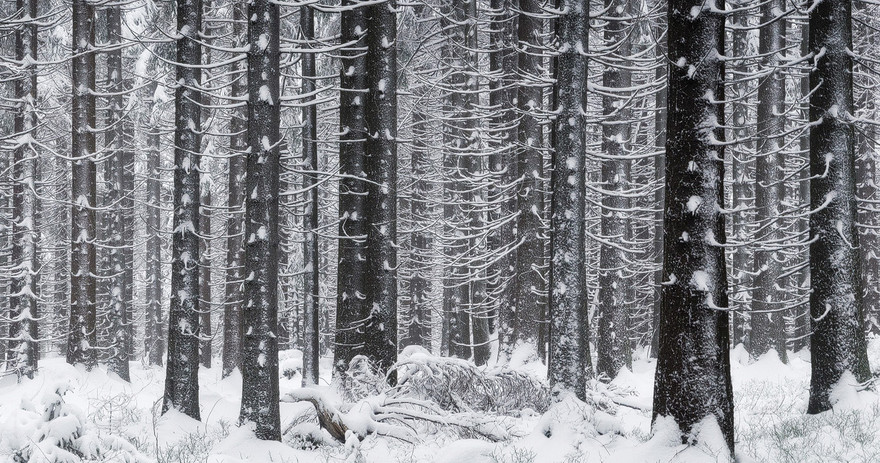Red, orange and yellow - stimulating and exciting; blue, turquoise and green - calming and relaxing, all these colours and many more occur naturally within a landscape. Changing dramatically through the seasons, they bring so much joy to us photographers. Colour however wasn’t available in photography from the start, and for our grandparents and parents, black and white film was a norm. Some consider black and white images as more artistic, many prefer more drama that can be achieved by clever use of light and dark, for others, there is a certain nostalgia and calm about black and white pictures. There is obviously the third way, barely a hint of colour, images desaturated by nature, or by a hand of a photographer in postprocessing. I strongly believe that desaturating some colours, or eliminating colour totally, enables us to focus more on the main subject and elements like textures and shapes.
Heiko Gerlicher created a wonderful image ‘Impenetrable’ that shows how important texture, lines and shapes are for photographs. I don’t think there are many people that would prefer to see this image in over-saturated colours, not only because nature itself limited drastically the range of colours here, but also because colour would take our attention from tall trees creating a delightful pattern, as well as from texture, so beautifully presented thanks to snow caught in the dark bark of the trees. Incorporating a fallen tree in the picture was also a clever move, as by breaking an almost uniform pattern of vertical lines, the image became more dynamic and interesting.
What is fundamental for a success in both, desaturated or black and white photography, is to learn to see it this way. It is not an easy task to ignore the colours in front of us and to concentrate on tones. Tones refer to the relative lightness or darkness of colour, and variations of tones is what we usually are drawn to in monochromatic images. One way to see what we want to photograph as tones of grey, is to compare main elements of pictures with photographic grey card. Another way is to use in-camera black and white mode or picture style, so you can see the final result immediately. Saving images in RAW means that you don’t lose any colour data and you can process it later in colour, as a desaturated version, or as a monochromatic image.
Beata Moore
Discover. Experience. Create


